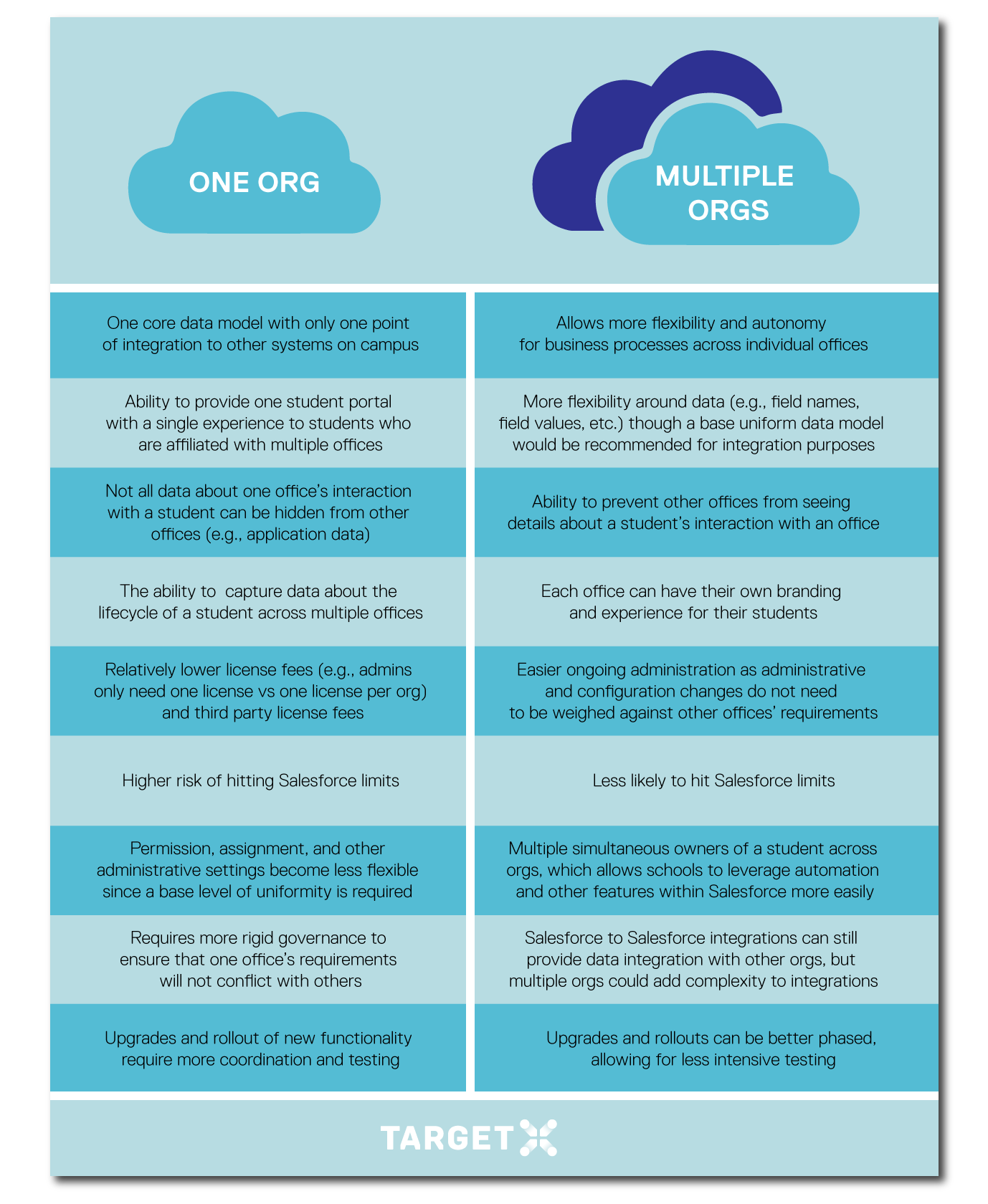
As one of the first HEDA Core Compatible partners in the Salesforce Education Cloud, we often receive questions around best practices for leveraging the power of the platform to adapt to and evolve with the dynamic needs of higher education. Today, we were hoping to address one of the most common questions that institutions ask us:
What is the optimal number of Salesforce orgs for institutions in higher ed?
Deciding on the optimal number of Salesforce orgs (sometimes referred to as “instances”) is one of the most important decisions an institution will need to make prior to implementation. This decision will have implications on staffing, governance requirements, budget, and overall functionality. Plus, this is a decision that can not be easily changed once implementation is underway, so it’s important to think about it ahead of time.
In short, the optimal number of orgs will always be the fewest number of orgs that meet the most business requirements of the offices involved. The tradeoff here exists between governance and flexibility; fewer orgs require more governance, and therefore, more uniformity and less flexibility. As a result, we believe that offices that maintain unique business processes and are more mature in their use and familiarity of CRM software should have their own dedicated org.
This means that a school could have a separate org for each office (e.g., business school vs. undergraduate), a separate org for each function (e.g., all offices manage their recruitment in a single org, all offices manage advancement in a separate org, etc.), a single org for all functions and offices, or anything in between. To help you determine which Salesforce org strategy is right for your institution, we’ve summarized the considerations of a single (or minimal number of) org approach vs a multi (or maximum number of) org approach in the table below. Feel free to download this table and use it as a resource!

When considering the above points to help inform your org strategy, be sure to think like an edupreneur. Don’t try to fit a round peg into a square hole – take the time to evaluate your institution’s business processes and decide which approach not only makes the most sense for each office involved, but also creates the most organizational efficiencies campuswide. The more upfront preparation the better, as this can mean all the difference in the long run! Once your CRM solution is live you’ll see your thoughtful org strategy pay off first hand, with more seamless user adoption and robust, organized data.
For even more information on org strategy, be sure to check out Greg Cook’s blog post, Enterprise Architecture: Single-org versus Multi-org Strategy, on the Salesforce Developers’ site.
